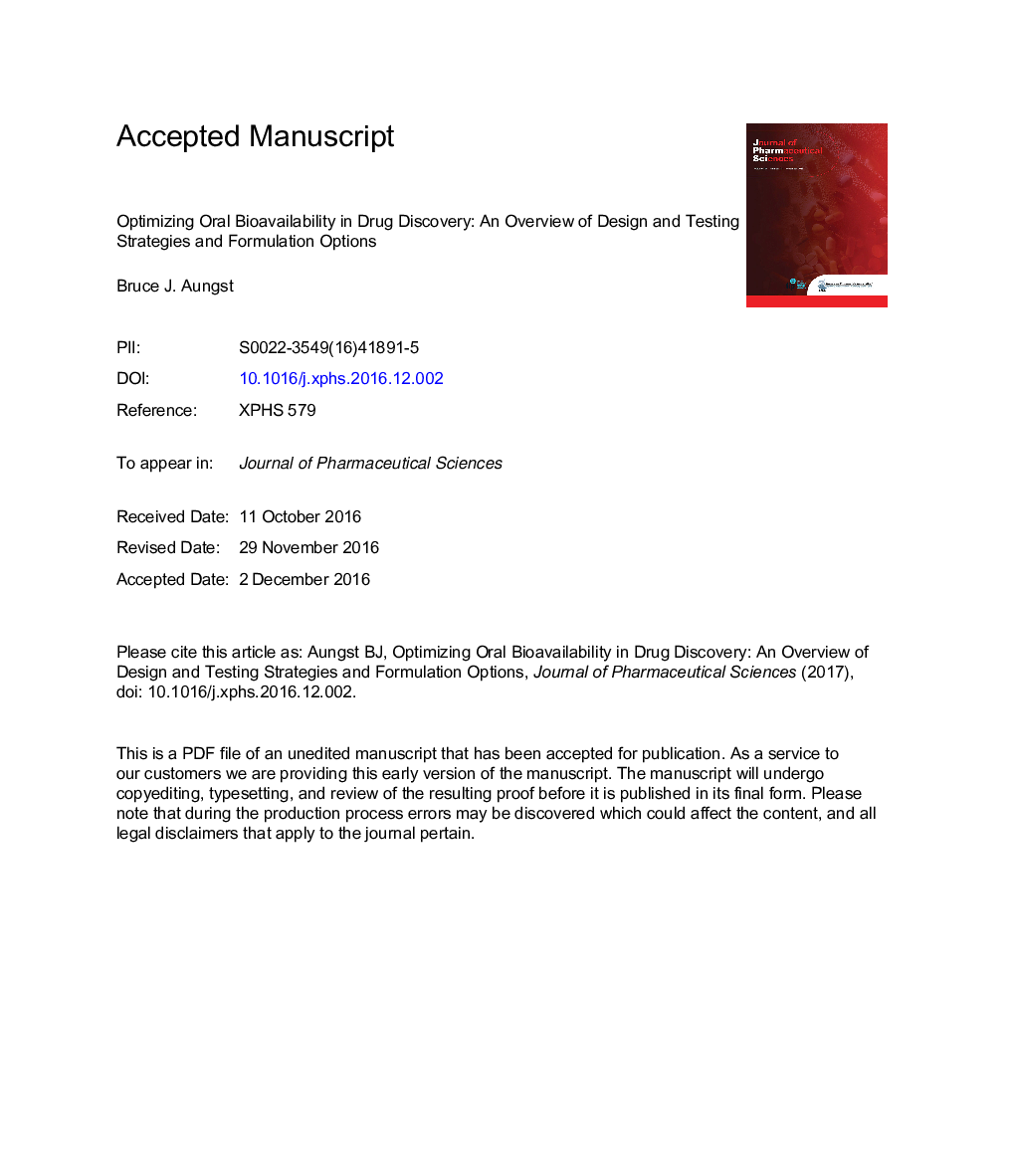| Article ID | Journal | Published Year | Pages | File Type |
|---|---|---|---|---|
| 8514282 | Journal of Pharmaceutical Sciences | 2017 | 33 Pages |
Abstract
For discovery teams working toward new, orally administered therapeutic agents, one requirement is to attain adequate systemic exposure after oral dosing, which is best accomplished when oral bioavailability is optimized. This report summarizes the bioavailability challenges currently faced in drug discovery, and the design and testing methods and strategies currently utilized to address the challenges. Profiling of discovery compounds usually includes separate assessments of solubility, permeability, and susceptibility to first-pass metabolism, which are the 3 most likely contributors to incomplete oral bioavailability. An initial assessment of absorption potential may be made computationally, and high throughput in vitro assays are typically performed to prioritize compounds for in vivo studies. The initial pharmacokinetic study is a critical decision point in compound evaluation, and the importance of the effect the dosing vehicle or formulation can have on oral bioavailability, especially for poorly water soluble compounds, is emphasized. Dosing vehicles and bioavailability-enabling formulations that can be used for discovery and preclinical studies are described. Optimizing oral bioavailability within a chemical series or for a lead compound requires identification of the barrier limiting bioavailability, and methods used for this purpose are outlined. Finally, a few key guidelines are offered for consideration when facing the challenges of optimizing oral bioavailability in drug discovery.
Keywords
Related Topics
Health Sciences
Pharmacology, Toxicology and Pharmaceutical Science
Drug Discovery
Authors
Bruce J. Aungst,
